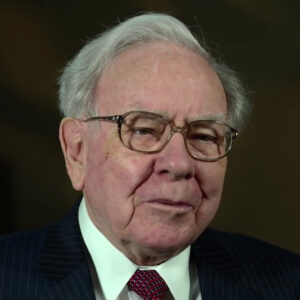Pfizer (PFE) delivered mixed financial results for the first quarter of 2025, reporting stronger-than-expected earnings but missing on top-line revenue. As the pharmaceutical giant navigates a post-COVID era of patent expirations and portfolio realignment, investors are closely watching how effectively the company can bridge a looming $17 billion revenue gap.
Adjusted earnings per share (EPS) for the quarter came in at $0.92, significantly ahead of Wall Street’s consensus estimate of $0.66. However, revenue totaled $13.7 billion, falling short of expectations for $14 billion. The stock edged up by less than 1% in pre-market trading following the announcement.
CEO Albert Bourla emphasized confidence in the company’s long-term prospects, citing strengthened research and development capabilities and ongoing productivity improvements. “With the underlying strength of our business, we believe we can be agile in navigating an uncertain and volatile external environment,” Bourla said in a statement.
Strategic Priorities: Plugging the Revenue Gap
Pfizer has been under growing scrutiny from analysts and shareholders as it grapples with declining COVID-19 revenuesand upcoming patent cliffs for several blockbuster drugs. The company is working aggressively to rebuild its product pipeline through a mix of internal development and acquisitions.
A central piece of this strategy is the $43 billion acquisition of Seagen, completed in 2024, which significantly boosts Pfizer’s oncology portfolio. One of Seagen’s key assets, Padcev, generated $1.6 billion in 2024 and is projected to contribute $3.1 billion annually at peak.
Pfizer reaffirmed its full-year 2025 guidance, expecting revenues between $61 and $64 billion and adjusted EPS of $2.80 to $3.00. Analysts view this as a positive sign of stability, although challenges remain.
Obesity Setback: Halted Trial Raises Concerns
One area of investor disappointment has been Pfizer’s effort to break into the high-growth obesity drug market, currently dominated by Eli Lilly (LLY) and Novo Nordisk (NVO). Hopes were high for Pfizer’s oral weight-loss therapy to serve as a differentiator, but the company was forced to halt its late-stage trial earlier this month due to a reported liver injury in a patient — a blow to its competitive ambitions in the sector.
Pfizer’s exit from the obesity race, at least in the near term, leaves Lilly and Novo with continued market leadership in the GLP-1 segment. For Pfizer, it underscores the importance of successfully leveraging its oncology and rare disease portfolios to drive near-term growth.
Investor Sentiment: Cautious Optimism
While the EPS beat and reaffirmed guidance provided some reassurance, the revenue miss and uncertainty around new drug development have led to measured investor reactions. Analysts broadly maintain a neutral to slightly bullishoutlook, contingent on clearer signals from the oncology pipeline and further commercialization of Seagen assets.
“Pfizer is in a transitional phase,” said Marla Vines, senior pharma analyst at Hightower Equity. “The market is giving it some room to maneuver, but execution on pipeline productivity is now critical.”
What’s Next: Focus on Oncology and Business Development
With lingering macro volatility and rising R&D costs, Pfizer will likely continue to pursue targeted acquisitions to shore up its late-stage pipeline. In the short term, much will hinge on the performance of newly acquired assets and updates from regulatory agencies regarding key approvals.
Upcoming investor calls and a mid-year R&D update will provide additional clarity on the company’s strategic roadmap. For now, Pfizer’s first-quarter results suggest early progress, but sustained momentum is far from guaranteed.







